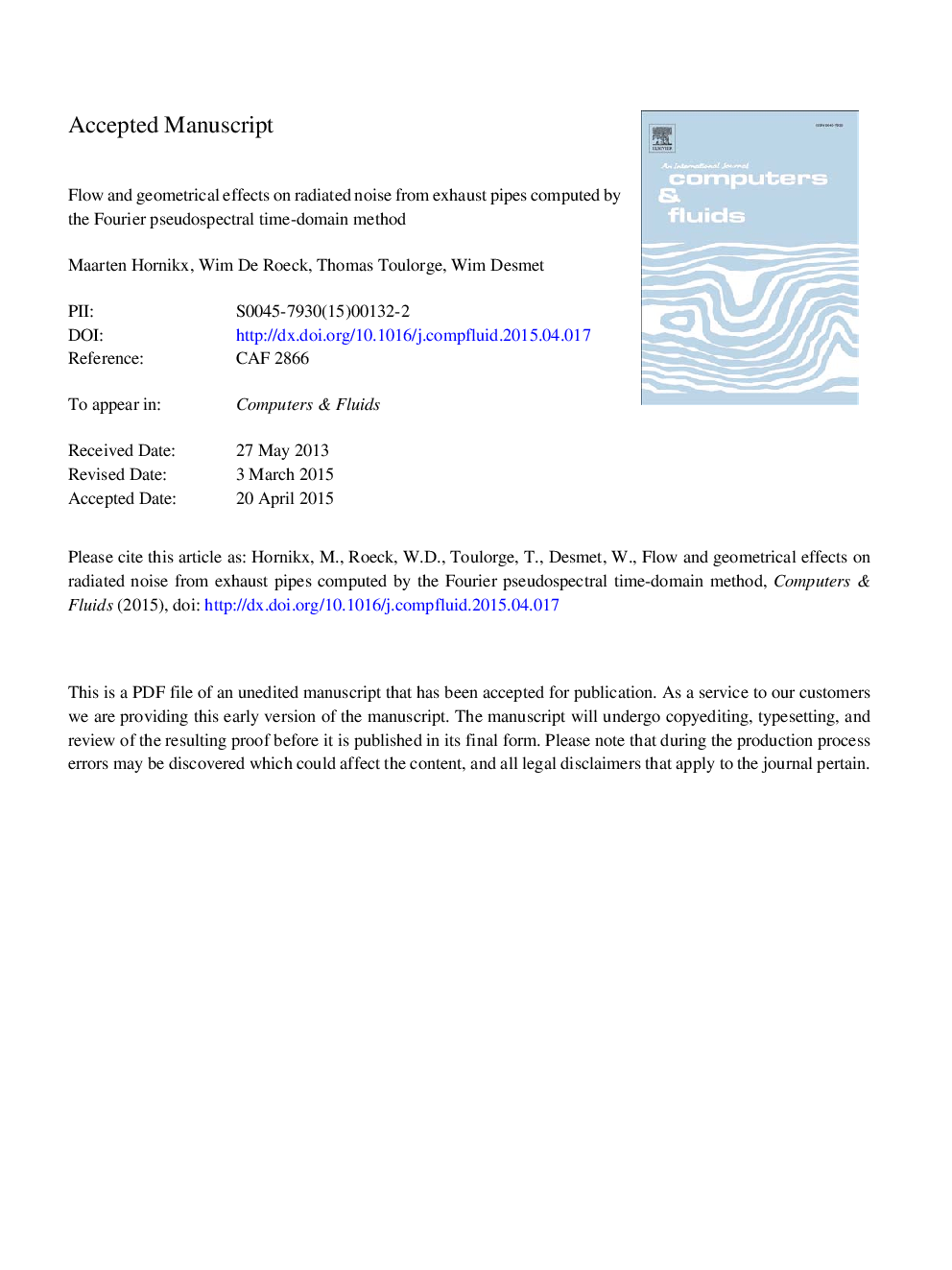| کد مقاله | کد نشریه | سال انتشار | مقاله انگلیسی | نسخه تمام متن |
|---|---|---|---|---|
| 7156945 | 1462694 | 2015 | 44 صفحه PDF | دانلود رایگان |
عنوان انگلیسی مقاله ISI
Flow and geometrical effects on radiated noise from exhaust pipes computed by the Fourier pseudospectral time-domain method
ترجمه فارسی عنوان
جریان و اثرات هندسی بر سر و صدا منتشر شده از لوله های اگزوز محاسبه شده توسط روش میدان زمان فصلی فوریه
دانلود مقاله + سفارش ترجمه
دانلود مقاله ISI انگلیسی
رایگان برای ایرانیان
کلمات کلیدی
معادلات اویلر خطی، روش زمان-دامنه معکوس، نویز سر و صدا، جریان آکوستیک،
موضوعات مرتبط
مهندسی و علوم پایه
سایر رشته های مهندسی
مکانیک محاسباتی
چکیده انگلیسی
The current work initializes a systematic numerical study on the combined effects of the geometry surrounding an automotive exhaust pipe, i.e. the ground surface and the automotive body, as well as the influence of the non-uniform velocity and temperature from the exhaust jet, on the acoustic radiation pattern of the pipe. The problem is treated by first solving the RANS equations to obtain the mean velocity and temperature solution of the exhaust jet. The acoustic radiation is computed by solving the linearized Euler (LEE) equations. For an efficient solution of the LEE, a recently developed multi-domain extended Fourier pseudospectral time-domain (PSTD) methodology is used. This method combines the favorable spectral accuracy of the PSTD method with a local grid refinement in the region with high gradients of the mean flow and temperature fields. A filter was found necessary for numerical stability of the PSTD method for this application. For radiation of noise from an exhaust pipe in free field, results from PSTD show a good agreement with reference results, both for cases with and without a jet flow. Results show that the presence of a rigid ground surface and simplified automotive body increases the radiated sound power by 6Â dB for the lower frequency region, and the effect of the body on the directivity is largest for the higher frequencies. Flow effects slightly increase the shielding effect of the body for all frequencies, but have a main impact behind the exhaust pipe, where low frequencies experience higher levels and a cone of low sound levels characterizes the high frequencies.
ناشر
Database: Elsevier - ScienceDirect (ساینس دایرکت)
Journal: Computers & Fluids - Volume 116, 15 August 2015, Pages 176-191
Journal: Computers & Fluids - Volume 116, 15 August 2015, Pages 176-191
نویسندگان
Maarten Hornikx, Wim De Roeck, Thomas Toulorge, Wim Desmet,
